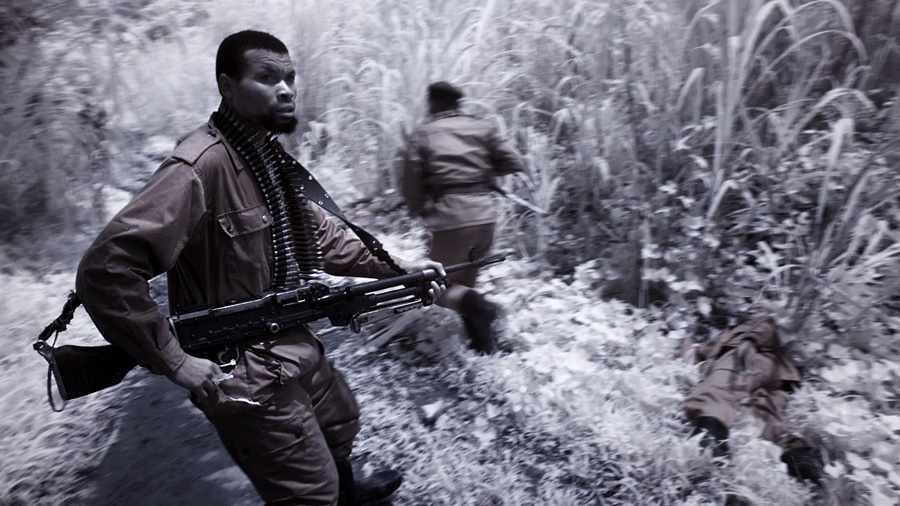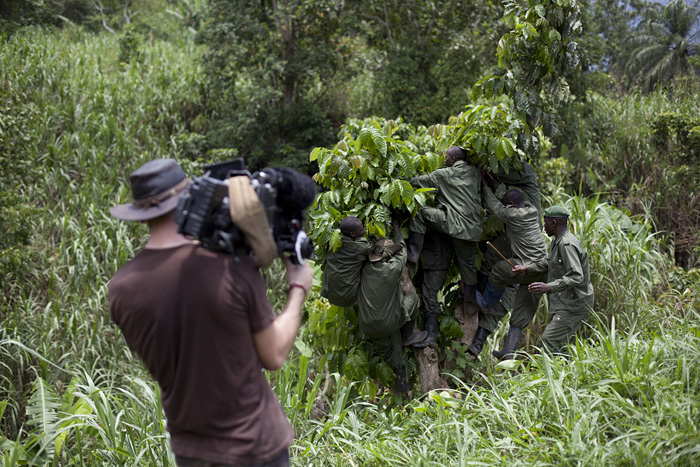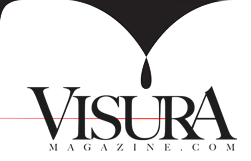

We carry a generator and gasoline to power a laptop and hard drives. Trevor Tweeten has joined me on this journey to shoot digital infrared. We have repurposed a Red One video camera. Removing the optical low-pass filter from the digital sensor, the camera begins to see infrared light. Next we block the visible spectrum (red, green, blue) by placing an opaque black filter, too thick to see through, over the camera lens. This register of true infrared light gives a peculiar reading, virtually monochrome except for vague traces of an alien topography’s ghostly hue. The jungle and mountain pastures glow a sinister white against darkening skies, as if we can perceive the living soul of things.
Trevor negotiates this place exclusively through the video camera’s LCD viewfinder. He refuses to look up at the scene. “Because the camera is seeing something totally different,” he says, “I can’t trust my eyes. I can guess, but at the same time I’m more dependent on the camera to see and in this way it feels like there’s much more of a barrier between me and the space.”

Our documentation is mediated by unearthly forms that represent an invisible spectrum far removed from known reality. A t-shirt on a rebel soldier reads Barack Obama, but the fabric dye goes undetected in infrared and the camera records only a tattered undecorated garment. General Janvier holds up a piece of paper for the camera with the name of his rebel movement A.P.C.L.S. written clearly in heavy permanent marker. But the lens sees only an unmarked sheet of white paper.
Our project’s inflation of the documentary disorients us into a place of reflexivity and skepticism, into a place in consonance with our intangible, impenetrable, ghost-like subject.
Written April 3, 2011
www.richardmosse.com





